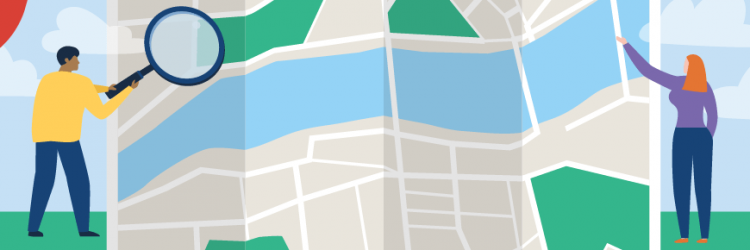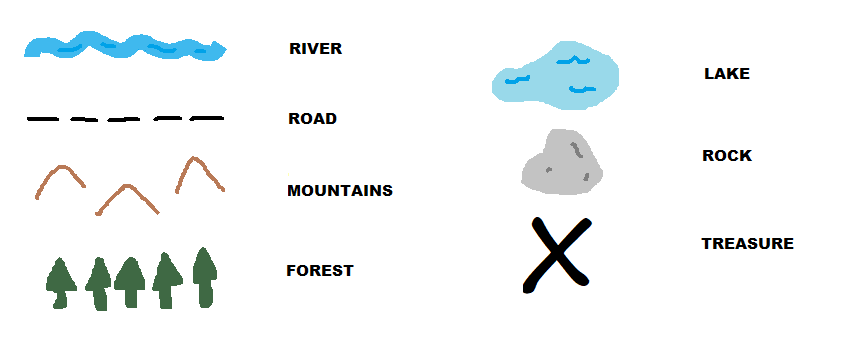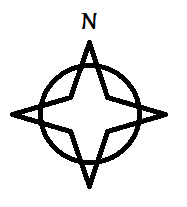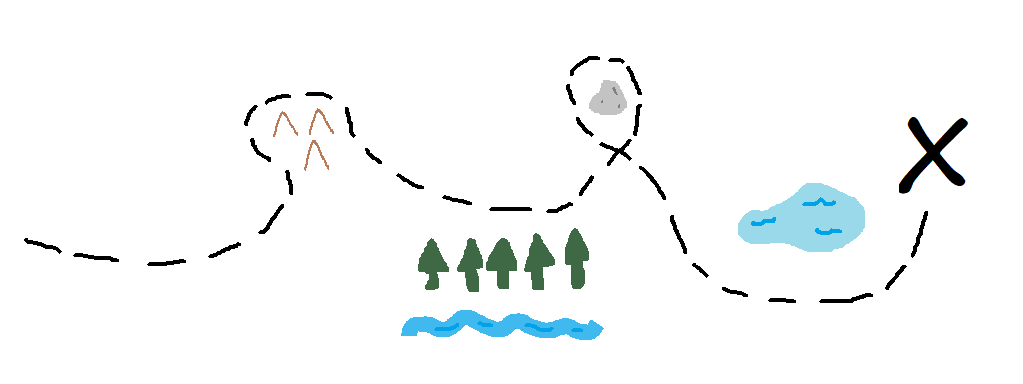
Must-have skill for children #1: reading a road map
In today’s digital age, does your child know how to read a road map? What may be considered a dying skill in this digital age, is still an extremely important skill worth having. Life is full of adventures, and what better way to navigate one than with a handy map on National Read a Road Map Day!
Many may be content using a GPS to get from point A to point B, but it is not the most reliable tool without basic skills as back up. What if your child cannot recognize the symbols the GPS uses? Is that a railroad track or a bridge? Who knows? Not to mention, this technology typically relies on some type of power and/or the Internet. Without one or the other, a GPS is practically useless. How would your child get out of a rut in the future without a handy physical map in the car?
Apart from the obvious practical aspects, learning how to read a map at an early age helps children with their education. At a young age, they are only just developing their spatial awareness and intelligence. Adults may take this for granted now, but children are still learning about positions, locations, and directions! It is hard for them to merely envision these concepts, which is why the JEI Learning Center’s program, Brain Safari, encompasses workbooks dedicated to mastering them. Children can learn the difference between North, South, East, and West with maps provided in the specialized workbooks provided throughout the program.
In order to read a road map, children will learn not only about positions, locations, directions, and distances but also symbols and compasses. The legend, or map key, is a box on a corner of a map that shows what each symbol means. The symbols can vary depending on what sort of map it is, so it is important to look at the legend first. Check out the example of a simple legend below!

This should help children recognize landscapes and realize that symbols are stand-ins for real objects and concepts. The dashed line is a symbol for a real road in some cases or a dirt path in others. An arrow pointing one way on a street means that is a one-way street, which is another important distinction.
The compass rose (example blow) also on the map should help children learn the directions north, south, east, and west, further increasing spatial intelligence. Some map compass roses may show only “N” for “north,” so make sure your child knows all parts of one to be prepared for any situation. Pair up the map with a compass, and your child will be a navigating master in no time! Keep in mind, though, that for some children, it is easier to navigate by landmarks while, for others, it is easier to navigate by directions. Practicing both will be the most helpful!

On top of that, JEI Math introduces the Metric System and the concept of distances as maps are scaled versions of the real world. A map may have a scale of 1 cm to 1 km, meaning 1 cm on the paper map would be 1 km of ground in real life. This is a fun way for children to apply math and number concepts to daily life.
To have your child interested in reading maps, there are many fun ways to go about this and apply it to real life. You could have a scavenger hunt or create a fake treasure map! Your child could even draw her/his own map for an imaginary or real area. Children sure love national parks and amusement parks–but a GPS is useless there. Have them grab a map when entering the park and use that to find the best way to landmarks or favorite rides.
For more real-life application, whenever going on a familiar route, say aloud the directions so your child can learn how to get there and consequently feel confident about learning directions to somewhere new in the future. For example, in the car, you can narrate, “And here, at this corner with the church, we turn right! At the next stop sign, we turn left onto Cranberry Avenue and keep going past the bagel shop until we see JEI on the right.”

Reading physical maps is a lost art, but it is a fun and important skill to tackle nonetheless! To further amplify the talents that reading a map entails, such as following instructions, figuring out directions, and learning distances, take a look at the Brain Safari and Math programs offered at a JEI Learning Center near you.


